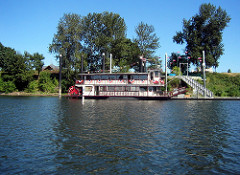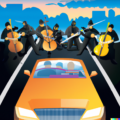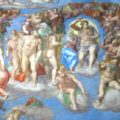
Photo by receive straight down
The World’s Fair, also known as the Exposition (Expo), is a large-scale public event held in various locations around the world. It serves as a platform for participating nations to showcase their culture and people. The first Expo took place in London B52 - Wade Crawley is back with a great B52 concert review! If you remember, Wade wrote for us Punk music in the late seventies. Now read his new exclusive article for ManuelMarino.com! The B52’s, London Roundhouse It was on a hot and very sweaty summer night in London’s trendy Camden and a packed audience of all… , England in 1851 and was named the “Great Exhibition of the Works of Industry of All Nations.” New Orleans has hosted the World’s Fair twice, first in 1884 and then again 100 years later in 1984.
1884:
During this time, New Orleans was home to the Cotton Exchange and the Cotton Planters Association, and one-third of all cotton in the United States was produced in Louisiana. Hence, the fair was named the World Cotton Centennial. The name refers to the earliest recorded cotton export from the US to England, which dates back to 1784. Although New Orleans was a relatively affluent city at the time, the US Congress loaned $1 million to the organizers. An additional $300,000 was allocated for the construction of a display for the US government. Unfortunately, the state treasurer fled the country with over $1.7 million, leaving the fair with a depleted budget. Eventually, additional funds were secured, and a lavish exposition opened two weeks behind schedule, on December 16, 1884.
The 249-acre fairgrounds were noteworthy for their versatility. Visitors arriving by train, river steamboat, or oceanic ship could enter the fair directly from their transportation. The 5,000 electrical lights illuminating the exhibits were also of great interest. Electricity was still a novelty for many people, even in some urban areas. Electric street vehicles and electrically driven elevators were showcased as the future of transportation. Mexico’s impressive display captivated visitors with its grandeur and traditional culture. With a budget comparable to that of the government exhibits, the Mexican presence was truly splendid. The large brass band entertained the crowds throughout the day, and the displays of Mexican culture sparked interest among all who visited. However, the fair closed on June 2, 1885, resulting in significant financial losses. Attempts to reuse the grounds and structures to generate revenue were largely unsuccessful.
1984:
The 1984 Louisiana World Exposition was named “The World of Rivers-Fresh Waters as a Source of Life.” Its goal was to highlight the resources found in freshwater, both nearby and far away. From the beginning, this exposition was classified as a “B” event, meaning there would be no major international exhibits. Situated along a significant stretch of land on the Mississippi River, the organizers demolished existing structures and built new ones for the fair. The exposition opened on May 12, 1984. The main attraction was the Mississippi Aerial River Transit, a gondola lift that spanned the river to the West Bank. Unfortunately, the fair declared bankruptcy while still operational and closed on November 11, 1984.
Attendance over the six-month period was only 7 million, in stark contrast to the over 22 million visitors at Expo 86 in Vancouver, Canada, just two years later. Several factors contributed to the failure of the 1984 Exposition. The 1982 Knoxville World’s Fair, located just 600 miles from New Orleans, was too close for families to feel the need to visit both fairs within a two-year span, especially considering that many exhibits would be similar. Additionally, the 1984 Summer Olympics in Los Angeles was a major global event that attracted a significant amount of attention. Consequently, many people chose to skip the New Orleans fair in favor of more exciting options. Bankruptcy proceedings were initiated, and the 1984 Louisiana World Exposition became such a financial catastrophe that no world’s fair has been held on American soil since.
The concept of world expositions emerged during a time when the world was still vast and largely unexplored. However, this is no longer the case, especially with the rapid advancement of web development. What was once displayed for discovery at expos and museums in the 19th and early 20th centuries can now be accessed online. Perhaps, in today’s context, the purpose of world’s fairs is better understood as a means for nations to promote themselves to the global marketplace. This may have been the underlying idea from the beginning. In any case, the World’s Fair is no longer solely associated with cotton candy and brass bands.
Manuel Marino is a seasoned Senior Producer, Music Composer, and Artist with over a decade of experience. He specializes in branded entertainment across various mediums, including video games, films, and advertising campaigns. With 20+ years as a game music composer, Manuel has worked on numerous platforms, creating diverse orchestral soundtracks. HIRE ME


 Manuel is a passionate, driven, and techsavvy AV technician,
Manuel is a passionate, driven, and techsavvy AV technician, 










[…] to do is listening and have in your mind stunts and jumps across the mountains, the snow, the rivers and beautiful […]
My new book “1884-NEW ORLEANS-1885 The Great World’s Fair”
ISBN 978-0-692-06509-9 contains over 250 rare photographic images of New Orleans and the exposition from my personal collection, consisting of stereoviews, magic lantern slides, and cabinet card photographs. Signed copies are available on eBay.com